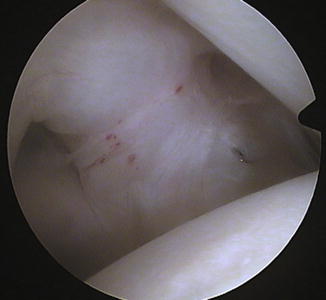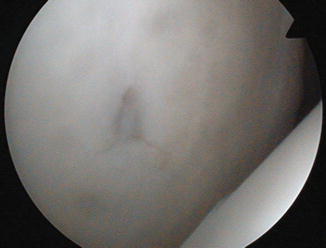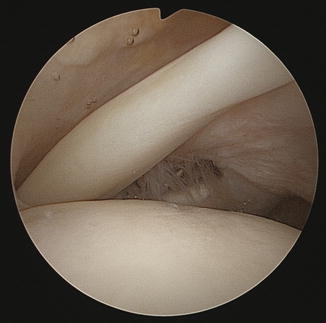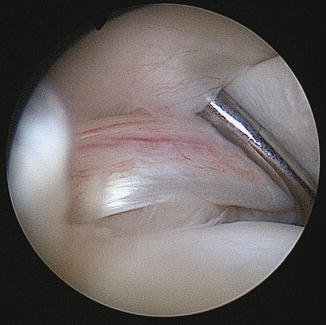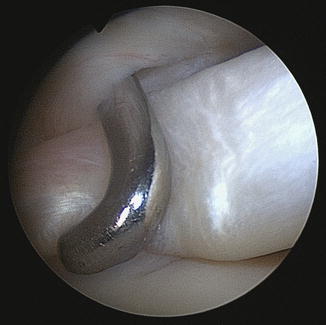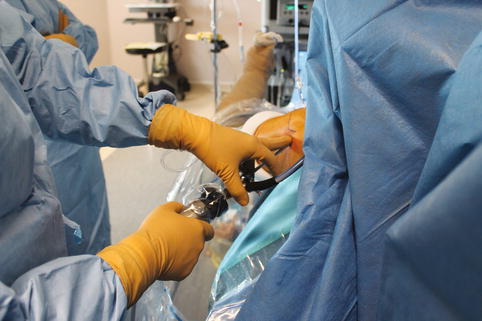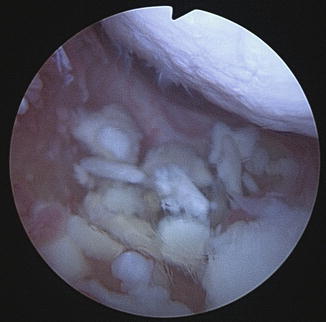(1)
Générale de Santé Hopital privé de, l’Estuaire, Le Havre, France
4.1 The Glenohumeral
As with any surgery, there must be order.
We have ten points to check.
The safety zone is the anterior triangle formed by the glenoid, the biceps, and the tendon of the subscapularis.
When starting to explore the shoulder through this zone, we are not going to run the risk of exiting the shoulder. Any exiting is a waste of time and an additional steam risk.
Point 1
The condition of the glenoid cartilage (to be mentioned in the CRO), because it can explain pain. The umbilical central zone is physiological; it serves as a bare spot for measuring glenoid bone defects (Fig. 4.2).
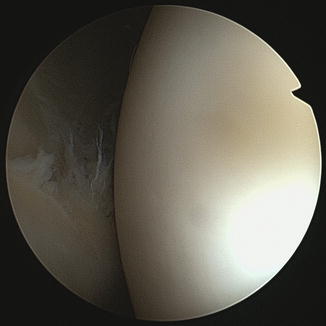

Fig. 4.3
Point 2
The cartilage of the humeral head and a possible notch (Fig. 4.3).
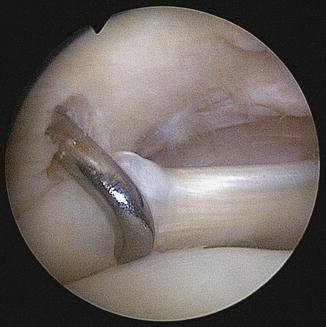
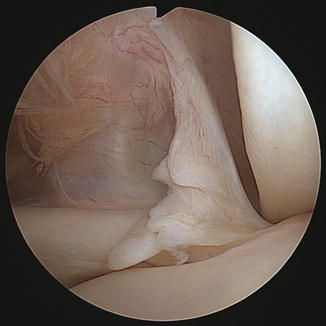
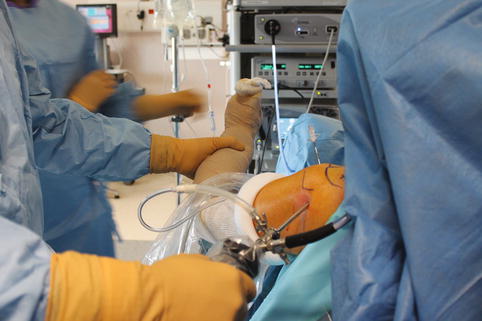
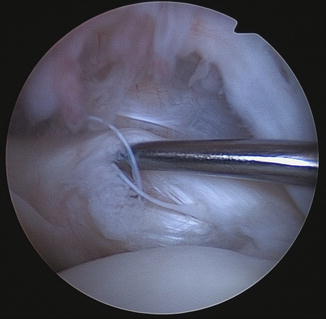

Fig. 4.4

Fig. 4.5

Fig. 4.6

Fig. 4.7
Point 3
Point 4
The biceps and the groove with the coracohumeral ligament will be explored with the help of the probe and by rotation. A dynamic exploration can be performed in the search for an instability. Placing the shoulder in forward flexion can also generate this space (Figs. 4.8, 4.9, 4.10, and 4.11).
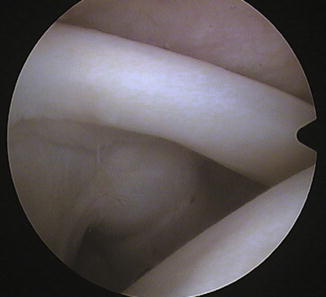
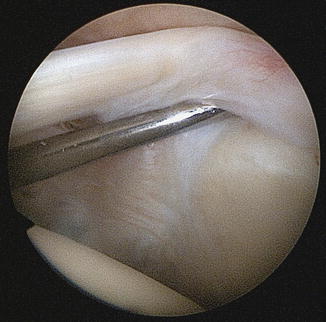

Fig. 4.12

Fig. 4.13
Point 5
Point 6
We continue downward, and the forward oblique of the scope is oriented inward; the probe is also recommended for the labrum (Fig. 4.14).
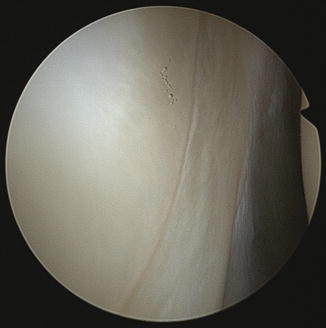
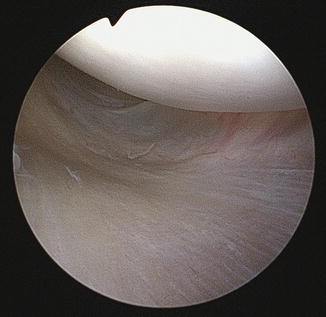

Fig. 4.14

Fig. 4.15

